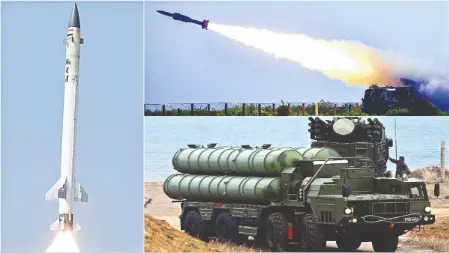Redefining national Air Defence and offensive capabilities

New Delhi: In a spectacular display of military might and technological superiority, India’s air defence systems recently demonstrated their mettle during the ‘Operation Sindoor’, a massive counteroffensive that left nine terrorist camps in Pakistan devastated.
In response, Pakistan tried to undertake a series of missile attacks against Indian military facilities in Jammu and Kashmir, Punjab, Rajasthan, and Gujarat.
But each of those missiles was either shot down while in flight or neutralized on its way to the target—a testament to India’s strong reinforced aerial shield.
This strong defence system is a product of more than a decade of strategic expenditure and infrastructure improvement, particularly during recent years. The Indian military, in a synchronised demonstration of preparedness and accuracy, launched a multi-layered air defence network that included the Integrated Counter-Unmanned Aerial System (UAS) Grid, Russian S-400 Triumf systems, Israeli Barak-8 surface-to-air missiles, domestically produced Akash missile batteries, and advanced anti-drone technologies developed by the Defence Research and Development Organisation (DRDO).
This consolidated system not only foiled the imminent attack but also exposed the uselessness of Pakistan’s internal air defence system.
India’s response was not one of defence alone. ‘Operation Sindoor’ involved the Indian Armed Forces carrying out deep-penetration precision attacks throughout Pakistani airspace, such as the destruction of a Chinese-provided HQ-9 air defence system in Lahore and the knocking out of principal radar facilities.
The speed and decisiveness of this counterstrike sent an unequivocal message: India possesses the ability and the will to nullify threats at their source.
This impressive state of readiness is not by chance. Since 2014, the Modi administration has methodically overhauled India’s air defence strategy. The most important change has been the purchase of S-400 Triumf missile systems from Russia in a Rs. 35,000 crore agreement signed in 2018.
Three out of the five squadrons are currently operational, placed strategically near the borders with Pakistan and China. In addition to this, the $2.5 billion deal with Israel for the Barak-8 Medium-Range Surface-to-Air Missiles, concluded in 2017, has added considerable strategic depth to front-line installations like Bhatinda.
Additional strength to this architecture comes from indigenous developments such as the Akash missile batteries and DRDO’s counter-drone systems.
In 2024, Man Portable Counter Drone Systems (MPCDS) were used to counter enemy UAV threats with jamming and disabling effects—adding another layer of security.
The recent conflict also saw a turning point in the employment of indigenous technology in live combat. Loitering munitions—locally manufactured suicidal drones purchased in 2021—were employed for the first time in live operations, successfully carrying out simultaneous attacks across multiple Pakistani sectors.
These were supplemented by Israeli-made Harop drones, now locally manufactured, which were used in targeting and destroying air defence assets in Karachi and Lahore. Rafale fighter aircraft, outfitted with SCALP and HAMMER missiles, also complemented India’s power projection with advanced, high-value precision strikes.
The contemporary defence strategy has definitively moved on from episodic upgrades. It has constructed a robust, adaptable, and technology-driven ecosystem with the ability to detect, jam, and neutralize threats even before they take shape. ‘Operation Sindoor’ was not merely a display of power; it was an exhibition of a decade-long metamorphosis. India today does not merely defend its airspace—it controls it.



